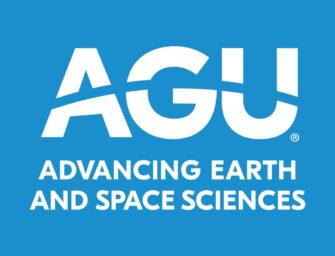Rise of GeoHealth
I think many of you know that I started my professional career in healthcare as a nurse. During the five years I spent doing direct patient care, I witnessed many examples of how environmental exposures to toxic materials could contribute to poor health. That’s why I was so pleased to be invited to participate in a congressional briefing hosted by the U.S. Geological Survey (USGS) titled “Linking Earth Sciences and Health,” which illustrated the critical role Earth science research plays in understanding the health impacts toxic chemicals and other substances can have, and how we can protect public health.
The briefing highlighted the transdisciplinary efforts and collaboration between USGS and the National Institute for Environmental Health Sciences, and called attention to many examples of how Earth science research contributes to our understanding of the impacts disasters and hazards have on long term physical and mental health and the safety of residences and workplaces. Here are some examples:
Earth science research was used to identify complex exposures to dust in the aftermath of the 9/11 attack on the World Trade Center and then used to monitor health impacts such as asthma, sinusitis, panic and depression.
During the Gulf Coast Oil Spill, workers employed in the cleanup were exposed to a variety of chemicals that pose health concerns related to skin, lungs, and mental health, and the seafood supply that is a staple of many people’s diets was contaminated as well. Earth science research led to a better understanding of the exposures and their consequences, and it was used in the largest study ever conducted on the health effects of oil spills.
We also heard about how broader collaboration across agencies and science disciplines is also underway. By combining geospatial and health information, USGS, several universities, the CDC, the Agency for Toxic Substances and Disease Registry, the National Institute for Occupational Safety and Health, the Department of Agriculture, the National Soil Conservation Service, the National Institute of Environmental Health, and the National Cancer Institute are all working together to research mineral fibers and health to understand the health risks of erionite and asbestos.
These are just a few examples of the amazing work being done today (learn more about other research and developments).
That briefing made me stop and think about the growth of published research in the geohealth domain (the intersection of Earth science and health science). Between 2009 and 2013, there has been a nearly 37% increase in geohealth articles published—this includes an increase of articles published in AGU journals. In 2014, AGU published 150 articles on geohealth. From 2009 – 2013, we only published approximately 40 articles per year. This development is echoed in the Scientific Trends report published by AGU’s Council in 2014, which also cited such topical areas as human-natural systems interactions and environmental impact.
When I was child, I lived a very small town that abutted strip mines. There was a stream in that town that we called “Sulphur Creek.” Even though we were told not to, sometimes children would take a chance and wade into its burnt orange waters to play. We didn’t understand what the potential threat was, only that we had been told that it was bad. Fifty years later, thanks to federal investment in both geoscience and health science, we have better knowledge of why water in creeks like “Sulphur Creek” is dangerous, and with that knowledge we are better prepared to take action.
For the benefit of society, I hope that the knowledge gained from events like the USGS briefing will compel Congress to recognize that we have an obligation to protect public health and safety, and to see that a strong investment in geoscience and health science is a critical part of that obligation.




[…] From Council member Geoff Plumlee, we learned about the crossover between earth science, human health, and environmental health reflected in the emerging field of geohealth. Publication output and funding for geohealth research are increasing, and geohealth content at AGU’s own meetings is on the rise. The Council sees the need for transdisciplinary research in this growing field and many opportunities for AGU to make an impact. Importantly, these opportunities are well-aligned with aspects of our mission: to lead the advancement our science, foster talent pool development in emerging fields, and to use our science to benefit society. (From the Prow, 15 November 2015) […]
[…] I noted in a From the Prow post last November, since 2009, we’ve seen almost a 37% increase in published geohealth research as our […]
[…] AGU Publications pages here. There was also an Eos article about the launch of this journal and a From the Prow blog post by the AGU CEO Chris McEntee a year ago, when AGU started working towards this journal concept. […]